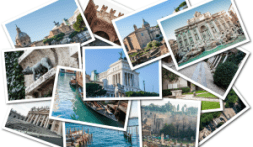
Explore Italy’s charm with our travel guide. From Rome’s history to Venice’s canals & Amalfi’s coast, discover culture, landscapes & cuisine tips!
Home • Destination • Thailand Travel Guide

“The most beautiful in the world is, of course, the world itself.” - Wallace Stevens
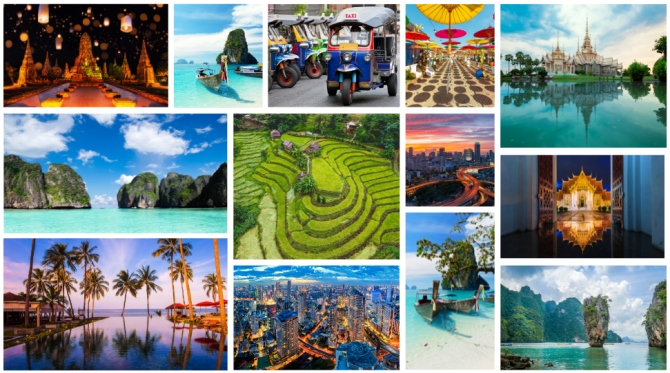
Thailand, the Land of Smiles, is a captivating Southeast Asian gem that effortlessly blends rich history, vibrant culture, and endless tourism delights. From its bustling street markets and paradisiacal islands to the ornate temples and spicy street food, Thailand is a traveler’s dream come true. Within this travel guide we’ll show you some things that make Thailand a vacation destination that you won’t want to miss!

Getting to Thailand from Australia is relatively easy, with multiple airlines offering direct flights from major Australian cities like Sydney, Melbourne, Brisbane and Perth Airports to all of the international airports in Thailand.
Once you arrive at the airport, you can easily find transport options such as taxis, private cars, or airport shuttles to take you to your resort.
Located in Bangkok, Suvarnabhumi is Thailand’s primary international gateway and one of the busiest airports in Southeast Asia.
Located on Phuket Island, this airport serves as a major international gateway for tourists visiting southern Thailand.
Another international airport in the south, Hat Yai Airport serves as a gateway for travelers to southern Thailand.
Located in Krabi Province, this airport handles international flights, particularly to popular tourist destinations like Kuala Lumpur and Singapore.
Located on Koh Samui, this airport connects to several international destinations, including Hong Kong, Singapore, and Kuala Lumpur.
Serving the northern region, Chiang Mai Airport has international flights connecting to nearby countries, such as China, Singapore, and Malaysia.
This airport in the northern region offers international flights to destinations such as China and Laos.
Located in northeastern Thailand, Udon Thani Airport has international routes to countries like Laos and Singapore.
Serving the southern region, Hat Yai Airport has international flights connecting to nearby countries.
This airport in northeastern Thailand offers international flights to neighboring countries like Laos.
Located near Pattaya, U-Tapao Airport serves international destinations, particularly in Asia.
When choosing a mode of transportation, consider factors such as your destination, budget, and the level of comfort you require. In cities like Bangkok, public transportation and rideshare services are convenient and cost-effective, while for exploring remote areas, you may need to rely on buses, trains, or domestic flights.
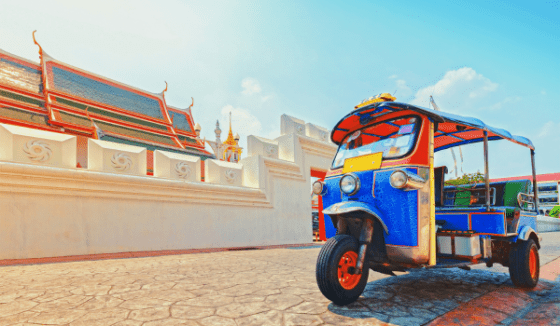
Getting around Thailand is relatively easy due to its well-developed transportation infrastructure.
Here are the main modes of transportation available for getting around the country:
Taxis are widely available in major cities like Bangkok, Chiang Mai, and Phuket. In Bangkok, taxis are metered, while in other cities, you may need to negotiate the fare in advance. They are a convenient way to get around, but be sure the driver uses the meter or agrees on a fare before starting the ride.
Tuk-tuks are iconic three-wheeled vehicles found throughout Thailand, often used for short trips within cities. Prices are typically negotiated with the driver, so it’s essential to agree on the fare beforehand.
Services like Grab are available in many Thai cities, offering a convenient and often more transparent alternative to traditional taxis. Prices are usually set in advance, and payment is made through the app.
Common in urban areas, motorcycle taxis are ideal for navigating through traffic quickly. Passengers ride pillion and wear provided helmets. Prices are typically lower than taxis or tuk-tuks.
Thailand has an extensive network of public buses that connect cities and towns across the country. These buses are an affordable option for long-distance travel. In larger cities, there are also local buses that serve different areas.
Bangkok’s modern and efficient BTS Skytrain and MRT subway systems provide a convenient way to navigate the city. They are especially useful for avoiding traffic congestion.
These shared pickup trucks with bench seats are a common form of transportation in smaller towns and rural areas. They operate on fixed routes and are often used for short journeys.
For intercity travel, long-distance buses offer comfort and a range of options, including VIP and sleeper buses. They connect major cities and tourist destinations.
Thailand’s train network provides a scenic way to travel between cities and regions. Trains vary in terms of comfort, with options like sleeper trains available for overnight journeys.
If you need to cover long distances quickly, domestic flights are available between major cities and popular tourist destinations. Airlines like Thai Airways and budget carriers like AirAsia operate domestic routes.
For island destinations like Phuket, Koh Samui, and Phi Phi, ferries and speedboats are common modes of transport. These services connect the mainland to the islands.
Renting a car or motorbike is an option, especially for exploring less accessible areas. However, be aware of local driving conditions and road safety, and make sure you have the necessary licenses and insurance.
In some areas, especially in scenic and less congested regions, cycling can be a pleasant and eco-friendly way to explore the countryside and local communities.
 Mida Grande Resort Phuket (Deluxe Room – 7N)
Mida Grande Resort Phuket (Deluxe Room – 7N)  Mida Grande Resort Phuket (Deluxe Room)
Mida Grande Resort Phuket (Deluxe Room)  Wyndham La Vita Phuket (Deluxe Suite)
Wyndham La Vita Phuket (Deluxe Suite)  Andaman Cannacia Resort & Spa ( Canna Dlx Seaview Room)
Andaman Cannacia Resort & Spa ( Canna Dlx Seaview Room) 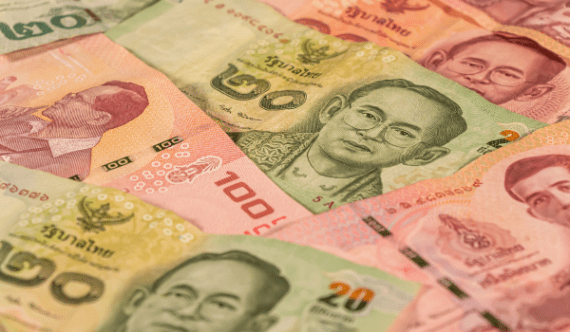
The Thai Baht (THB) is the official currency of Thailand and has been in circulation since 1897. It plays a central role in the country’s economy and is widely accepted for all types of transactions. Here are some key features and details about the Thai Baht:
Banknotes and Coins: The Thai Baht is available in both banknote and coin forms. Banknotes come in denominations of 20, 50, 100, 500, and 1,000 Baht. Coins are available in 1, 2, 5, and 10 Baht denominations, as well as smaller satang coins, including 25 and 50 satang. However, the satang coins are rarely used in daily transactions.
Currency Symbol: The Thai Baht is represented by the symbol “฿,” which is often used to denote prices and values in Thailand. For example, 100 Baht is written as “฿100.”
Widespread Acceptance: The Thai Baht is widely accepted throughout the country, and you can use it for various transactions, including shopping, dining, transportation, and accommodations. Credit and debit cards are also commonly accepted in major cities and tourist areas.
ATMs: Thailand has a vast network of ATMs (Automatic Teller Machines), and you can withdraw Thai Baht directly from these machines using your foreign bank card. Just be aware of any associated fees from your home bank for international withdrawals.
Currency Exchange: You can exchange your foreign currency for Thai Baht at banks, currency exchange booths, and some hotels. Rates may vary slightly between different providers, so it’s a good idea to compare rates before exchanging.

Thailand’s diverse shopping scene, from bustling street markets to high-end malls, caters to a wide range of preferences and budgets. It’s a chance to explore traditional crafts, savor delicious street food, and interact with friendly locals. The affordability of goods, wide product variety, and accessibility of shopping areas make it an integral part of the travel experience.
There are many large shopping malls in Thailand such as CentralWorld, The Emporium, Iconsiam and EmQuartier in Bangkok, Jungceylon Shopping Complex in Phuket and Central Festival Pattaya Beach in Pattaya.
Thailand is famous for its vibrant street markets, such as Chatuchak Market in Bangkok, where you can find everything from clothing and accessories to antiques and local crafts.
Many cities and towns host night markets with food stalls, clothing, souvenirs, and entertainment. Examples include Chiang Mai's Night Bazaar and the Asiatique Night Market in Bangkok.
Explore unique markets where vendors sell their goods from boats along canals, like Damnoen Saduak Floating Market in Bangkok.
Don't forget to shop at local food markets to sample Thai snacks, fresh produce, and regional specialties.
Visit artisan villages like Ban Tha Rae in Ubon Ratchathani to witness traditional craftsmanship and buy handmade products.
Traveling to Thailand promises an unforgettable journey filled with diverse experiences and captivating highlights. From the bustling metropolis of Bangkok, where ancient temples coexist with modern skyscrapers, to the idyllic beaches of Phuket, Krabi, and Koh Samui, Thailand offers a wealth of natural beauty and cultural wonders.
Immerse yourself in the rich Thai culture, from exploring ornate temples like Wat Pho and Wat Arun to witnessing traditional Thai dance performances. The country’s cuisine is a culinary adventure in itself, with street food stalls offering delectable dishes like Pad Thai and Som Tum, while upscale restaurants serve gourmet Thai fusion cuisine.
Beyond the urban centers, Thailand’s natural landscapes beckon adventurers. Trekking in the lush jungles of Chiang Mai, exploring the serene waters of Phang Nga Bay, and diving in the coral-rich waters of the Andaman Sea are just a few of the outdoor pursuits available.
In addition to these well-known highlights, Thailand often has festivals and traditions that provide a deeper insight into its cultural heritage. Festivals like Songkran, the Thai New Year’s water festival, where locals and tourists alike participate in lively water fights, and Loy Krathong, the Festival of Lights, with its stunning lantern displays on water bodies, offer an immersive cultural experience. These festivals showcase the customs and vibrant spirit of Thailand, adding a layer of cultural richness to any visit.
Thailand is a diverse country with a wide range of cities and provinces to explore. Here are 6 of the top cities and provinces to visit in Thailand, each offering its unique charm and attractions:
The capital city of Thailand, Bangkok is a vibrant city known for its bustling street life, grand temples, vibrant markets, and a thriving food scene. Some must-visit places include the Grand Palace, Wat Pho, and the bustling street markets.
Suvarnabhumi Airport (BKK) is the main international airport serving Bangkok. The distance from Suvarnabhumi Airport to the city center of Bangkok, which is typically considered the area around Siam Square, is approximately 25 to 30 kilometers (15 to 19 miles) depending on your exact destination within the city.
Located in northern Thailand, Chiang Mai is famous for its historic temples, beautiful mountain scenery, and a laid-back atmosphere. It’s also a hub for adventure activities and a center for Thai culture and traditions.
Chiang Mai International Airport (CNX) is conveniently located close to the city center of Chiang Mai. The distance from Chiang Mai Airport to the city center, which is typically considered the Old City area, is approximately 3 kilometers (about 1.9 miles).
Thailand’s largest island, Phuket, is a popular beach destination known for its stunning beaches, vibrant nightlife, and a wide range of water sports and activities.
Phuket International Airport (HKT) is located on the northern part of Phuket Island, and the distance from the airport to Phuket City (Phuket Town), which is the provincial capital and the largest town on the island, is approximately 32 kilometers (about 20 miles) to the south.
Read our Phuket Travel Guide for more information about vacationing in Phuket!
Krabi is renowned for its stunning limestone cliffs, crystal-clear waters, and access to the beautiful Phi Phi Islands. It’s a top spot for rock climbing, snorkeling, and beach relaxation.
Krabi Province in Thailand is served by Krabi International Airport (KBV), which is the nearest international airport to the province. The distance from Krabi International Airport to the city center of Krabi Town, the provincial capital, is approximately 15 kilometers (about 9 miles).
Koh Samui, an island in Thailand’s Gulf of Thailand, offers a mix of natural beauty, cultural attractions, and outdoor adventures. Koh Samui is famous for its palm-fringed beaches, luxury resorts, and vibrant nightlife.
Koh Samui is served by Samui International Airport (USM). The airport is located on the northern coast of Koh Samui. The distance from Samui International Airport to popular tourist areas like Chaweng Beach is approximately 6 to 7 kilometers (about 3.7 to 4.3 miles).
Located on the Gulf of Thailand, Pattaya is famous for its lively nightlife, beautiful beaches, and water parks. It’s a popular destination for both relaxation and entertainment.
The nearest international airport to Pattaya is Suvarnabhumi Airport (BKK), which is located in Bangkok. The distance from Suvarnabhumi Airport to Pattaya is approximately 120 to 130 kilometers (about 75 to 81 miles) depending on your exact destination within Pattaya.
 Mida Grande Resort Phuket (Deluxe Room – 7N)
Mida Grande Resort Phuket (Deluxe Room – 7N)  Mida Grande Resort Phuket (Deluxe Room)
Mida Grande Resort Phuket (Deluxe Room)  Wyndham La Vita Phuket (Deluxe Suite)
Wyndham La Vita Phuket (Deluxe Suite)  Andaman Cannacia Resort & Spa ( Canna Dlx Seaview Room)
Andaman Cannacia Resort & Spa ( Canna Dlx Seaview Room) 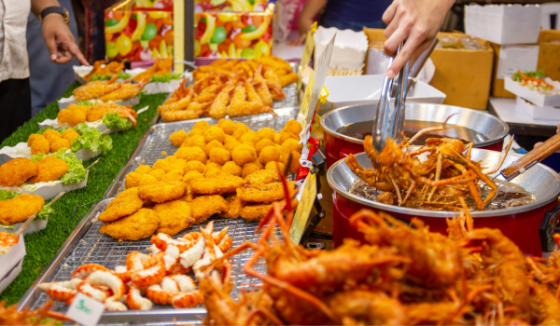
Thailand’s culinary scene is incredibly diverse, offering a wide range of international and fusion cuisine alongside its traditional Thai delicacies. Check out the local street food stalls, upscale dining establishments, and charming Thai eateries (known as “shophouses”) to experience the full spectrum of Thailand’s foodie delights.
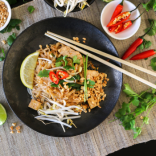
A classic stir-fried noodle dish with tofu, shrimp, or chicken, flavored with tamarind paste, fish sauce, and crushed peanuts.

Fried noodles stir-fried with vegetables, meat, or seafood, and seasoned with sweet soy sauce, garlic, and chili.
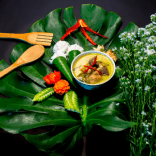
A fragrant and spicy coconut milk-based curry with chicken, beef, or vegetables.
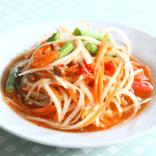
A zesty papaya salad made with shredded green papaya, lime, fish sauce, chilies, and peanuts.

A spicy stir-fry dish with minced pork, Thai basil, and chilies, often served with a fried egg on top.
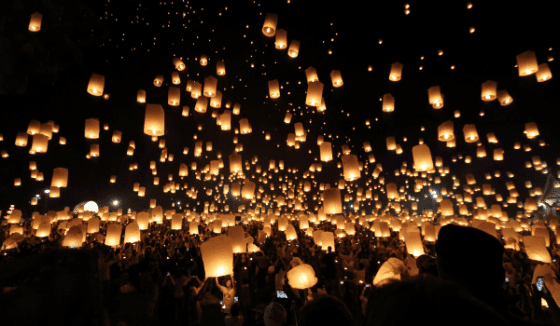
Thailand’s culture is deeply rooted in tradition and has been shaped by its unique history, religion, and regional diversity.
Thais hold great reverence for their monarchy. It is essential to show respect for the Thai royal family.
Buddhism is the predominant religion in Thailand, and its influence is pervasive. Temples, or "wats," are an integral part of Thai culture, and monks play a respected role in society. Visitors are expected to show respect when entering temples, which includes dressing modestly and removing their shoes.
The traditional Thai greeting is the "wai," where one places their hands together in a prayer-like gesture and bows slightly.
Thailand hosts numerous cultural festivals throughout the year, such as Songkran (Thai New Year) and Loy Krathong (Festival of Lights), where locals and tourists participate in traditional customs, rituals, and celebrations.
Traditional Thai dance, music, and art play a significant role in cultural expression. Classical dance performances often depict stories from Thai folklore and history.
Thai society places a strong emphasis on hierarchy and respect for elders. Younger individuals are expected to show deference to their seniors in terms of speech and actions.
Thais hold various customs and superstitions, such as avoiding pointing one's feet at people or religious objects, not touching someone's head (considered the most sacred part of the body), and taking off shoes before entering someone's home.
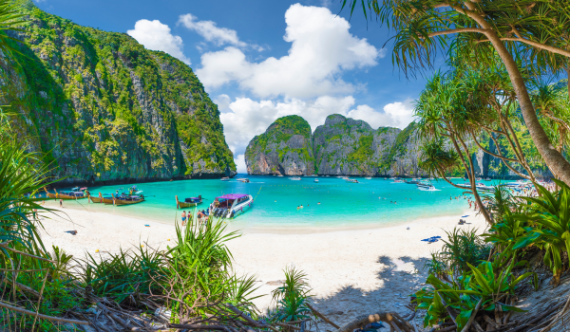
Thailand experiences a tropical climate with distinct weather seasons. Thailand’s climate varies by region, and it’s important to check the specific weather conditions for your chosen destination and time of year when planning your next Thailand vacation.
The country can be broadly categorized into three main weather seasons:
Australian tourists can get a visa exemption for:
For longer stays, or if you’re travelling for reasons other than tourism, you’ll need to apply for a visa before you travel.
Entry and exit conditions can change at short notice. Contact the nearest Embassy or consulate of Thailand, the Royal Thai Embassy Canberra or Royal Thai Consulate-General Sydney. See the official website of the Tourism Authority of Thailand for the latest details about visas, currency, customs and quarantine rules.
Source: SmartTraveller.gov.au
So there you have it—a sneak peek into the captivating world of Thailand. With its rich history, welcoming culture, and endless tourism possibilities, this Southeast Asian gem is sure to steal your heart and make your travel dreams come true.
Whether you’re an adventure seeker, a culture enthusiast, or simply a want to enjoy beautiful beaches, Thailand has something magical waiting just for you. Don’t wait; start planning your Thai adventure today!

 Mida Grande Resort Phuket (Deluxe Room – 7N)
Mida Grande Resort Phuket (Deluxe Room – 7N)  Mida Grande Resort Phuket (Deluxe Room)
Mida Grande Resort Phuket (Deluxe Room)  Wyndham La Vita Phuket (Deluxe Suite)
Wyndham La Vita Phuket (Deluxe Suite)  Andaman Cannacia Resort & Spa ( Canna Dlx Seaview Room)
Andaman Cannacia Resort & Spa ( Canna Dlx Seaview Room) Please ensure you have a confirmed booking with the resort before paying for flights.

Explore Italy’s charm with our travel guide. From Rome’s history to Venice’s canals & Amalfi’s coast, discover culture, landscapes & cuisine tips!
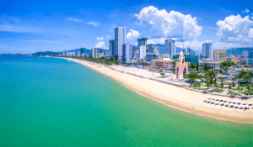
Searching for stunning beaches, delicious food, and Vietnamese charm? Discover our Nha Trang travel guide for your ultimate coastal escape.
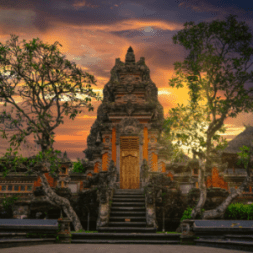
Discover our Ubud Travel Guide: from attractions & transport to food & costs. Plan your Bali trip with our Ubud insights!

Beaches, Islands and Relaxation! Fiji is the place to be! Discover top destinations, cuisine, and local insights in our Fiji Travel Guide.